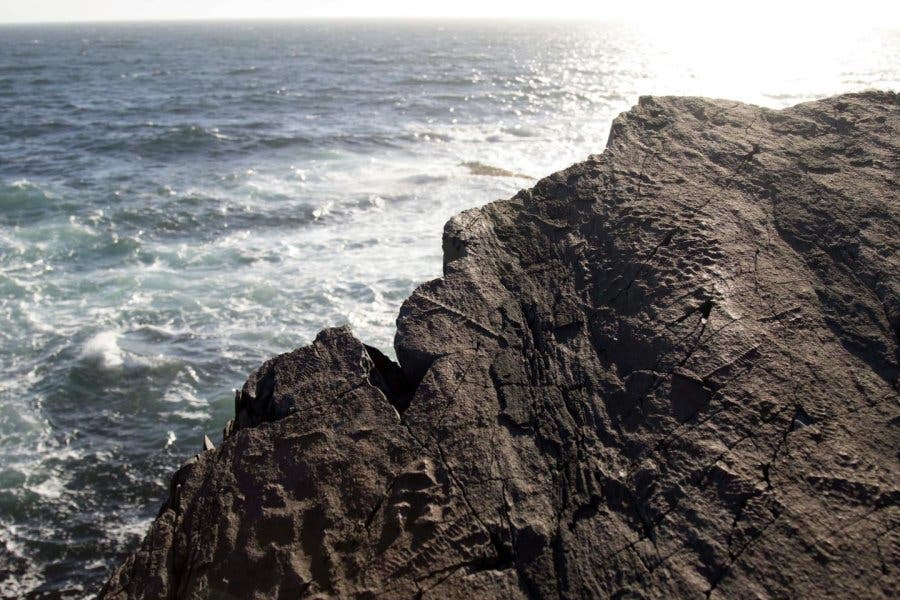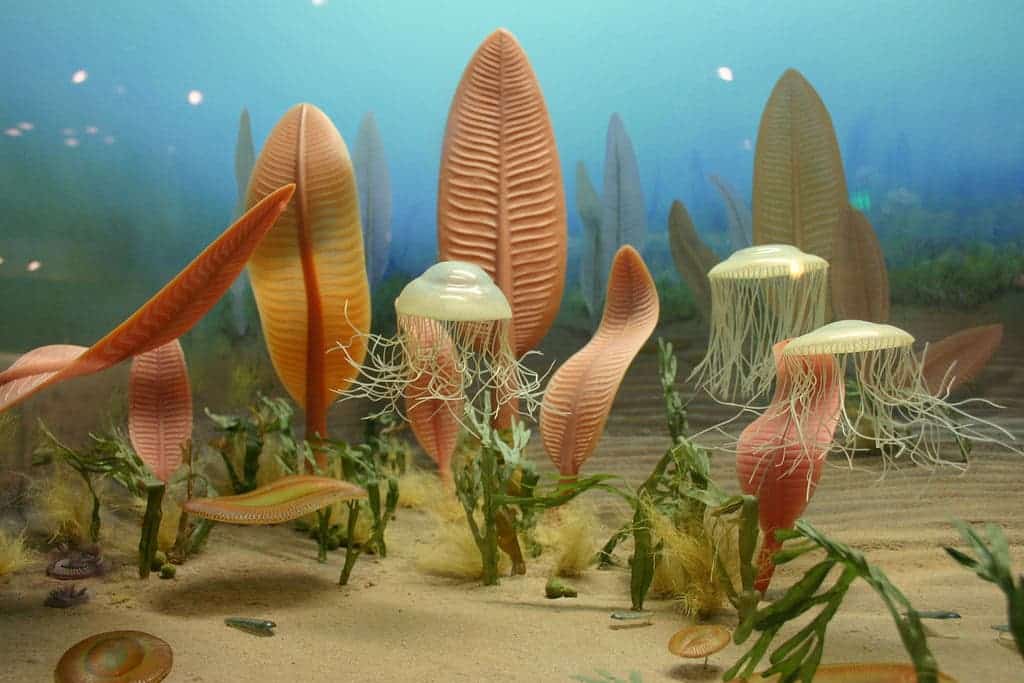Life on Earth may have first grown to macroscopic sizes not to compete for food, but to spread their genes far and wide.

Image credits Emily Mitchell.
Complex life is all about making babies — and spreading them far, according to new research led by the University of Cambridge. In a newly-published paper, they report that the most successful complex species living in the ocean over half a billion years ago were the ones who could spread their offspring the farthest, thus colonizing more land.
Wildest oats
Prior to what geologists refer to as the Ediacaran period (between 635 and 541 million years ago), life on Earth was content to stay microscopic. During the Ediacaran, however, we see the first complex (multicellular) organisms. Some of them, such as the rangeomorphs, could grow up to two meters tall.
We don’t know a whole lot about rangeomorphs. We don’t really know if they were plants or animals, for that matter. What we do know is that they look a lot like ferns and that they’re among the first complex life forms to evolve on the planet — although that’s hard to confirm. Like all other organisms hailing from the Ediacaran, they had no mouths, don’t seem to have had any organs, and lack any obvious means of locomotion — so they were likely filter-feeders, like modern-day clams for example.
One interesting pattern that emerges from the fossil record is that these Ediacaran organisms tended to become more diverse over time — and eventually developed stem-like structures to keep them upright. It was these stems that prompted the research. Plants today also sport stems, and most use height to outcompete their neighbors for resources such as light. But we don’t know if rangeomorph stems served as a means to one-up competitors — although previous research has suggested that their increase in size was driven by competition for nutrients at different water depths.

Image credits Ryan Somma / Flikr.
“We wanted to know whether there were similar drivers for organisms during the Ediacaran period,” said Dr Emily Mitchell of Cambridge’s Department of Earth Sciences, the paper’s lead author. “Did life on Earth get big as a result of competition?”
The oceans at the time were very rich in nutrients, so there wasn’t much competition for resources, and predators did not yet exist. So there must have been another reason why life forms got so big during this period.”
Mitchell and co-author Dr. Charlotte Kenchington, from Memorial University of Newfoundland in Canada, worked with fossils retrieved from Mistaken Point, in south-eastern Newfoundland. This area is one of the richest sites of Ediacaran fossils in the world.
Since Ediacaran organisms were immobile, they were preserved where they lived. As such, the team could analyze entire populations from the fossils. Using spatial analysis techniques, the duo found that there was no correlation between individual size and competition for food. In other words, the rangeomorphs did not tier — they didn’t occupy different parts of the water column to avoid competing for food with their peers.
“If they were competing for food, then we would expect to find that the organisms with stems were highly tiered,” said Kenchington. “But we found the opposite: the organisms without stems were actually more tiered than those with stems, so the stems probably served another function.”
The team believes that the stems were used to enable a greater dispersion of offspring — which rangeomorphs produced by expelling ‘propagules‘. The tallest organisms were surrounded by the largest clusters of offspring, the team found, suggesting that height helped individuals colonize a greater area with their offspring.
Still, about 540 million years ago, rangeomorphs and other Ediacaran organisms disappeared from the fossil record. It’s the Cambrian period now, and evolution is having a blast designing new and surreal creatures — including predators. Rangeomorphs, without the ability to move around, couldn’t do much to protect themselves against these predators.
The paper “The utility of height for the Ediacaran organisms of Mistaken Point” has been published in the journal Nature Ecology & Evolution.


